 Covering COVID-19 is a daily Poynter briefing of story ideas about the coronavirus and other timely topics for journalists, written by senior faculty Al Tompkins. Sign up here to have it delivered to your inbox every weekday morning.
Covering COVID-19 is a daily Poynter briefing of story ideas about the coronavirus and other timely topics for journalists, written by senior faculty Al Tompkins. Sign up here to have it delivered to your inbox every weekday morning.
The National Press Photographers Association filed a request with the Centers for Disease Control and Prevention’s Advisory Committee of Immunization Practices asking “that journalists who have direct contact with the public on a regular basis, and particularly visual journalists, be expressly included in the phase of the COVID-19 vaccine that includes the essential and critical infrastructure workforce.”
The application, filed by NPPA’s legal counsel, Mickey Osterreicher, argues:
Visual journalists cannot work from home, and have put their health and lives at risk on a daily basis to cover both the COVID-19 pandemic and other matters of public concern, including matters critical to the health and safety of the public and critical to our democracy. These journalists must work in the conditions they find — regardless of the risk. While others have the option to walk away from large crowds, or to avoid members of the public that don’t follow CDC health guidelines, visual journalists repeatedly put their own safety at risk to document what is occurring and inform their communities, large and small. As a result, we have seen visual journalists become infected, hospitalized, and even, unfortunately, succumb to COVID-19.
NPPA says the U.S. Department of Homeland Security’s Cybersecurity and Infrastructure Security Agency set a precedent for putting people working in “telecommunications” high on the list of those who would get COVID-19 immunizations when it recognized front-line news reporters as critical infrastructure workers.
In April, DHS and CISA refined the vague, broad language to recognize journalists as essential workers. The new language said, “Workers who support radio, television, and media service, including, but not limited to front-line news reporters, studio, and technicians for newsgathering, and reporting, and publishing news” are included as essential.
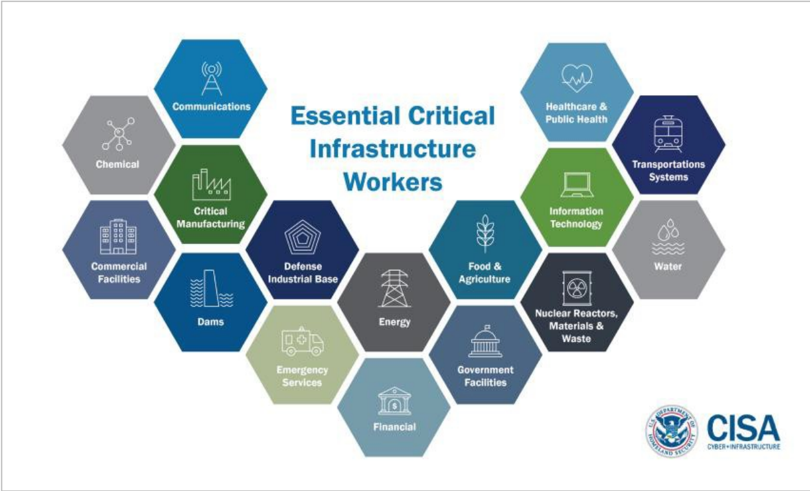
These are the groups of workers who are considered to be in essential services. It places journalists in a similar priority for vaccines to people working in critical manufacturing, schools, bus drivers and workers who maintain the power grid. (CISA)
Even though the guidance is from the federal government, it will likely be up to states to set their own vaccine protocols. These states are following CISA guidance, but may also have their own essential business lists: Alaska, Connecticut, Delaware, District of Columbia, Florida, Georgia, Hawaii, Idaho, Illinois, Indiana, Kansas, Kentucky, Louisiana, Maine, Maryland, Massachusetts, Michigan, Minnesota, Mississippi, Montana, North Carolina, Ohio, Oklahoma, Tennessee, Texas, West Virginia and Wisconsin. (Go here to get more details on each state’s language.)
Once again, you can see where the problems may arise if there is no national protocol about who is high on the list of vaccine recipients and who can wait. It is not difficult to imagine people living in one state and working in another state hopping state lines to move up the list.
What 635 epidemiologists plan to do for Thanksgiving
I wish I remember who it was who taught a session at the Investigative Reporters and Editors conference some years back who said when they cover stories involving scientific or medical studies they always asked the question of the researcher, “How have these results changed the way you live (or eat or travel)?” (I think it was Roberta Baskin or Pam Zekman.) The point is that if the results of the research don’t change the researcher’s habits, maybe the results are not that convincing.
That brings me to this cool survey from The New York Times in which they asked 635 epidemiologists (members of the Society for Epidemiologic Research) how they would celebrate Thanksgiving this year.
These two responses stuck with me:
“Seeing family is restorative and a source of joy,” said Danielle Gartner, a research associate at Michigan State University. But she is pregnant and said she was also weighing the risks to her health and her baby’s. “Given the spikes in cases in Michigan, we decided it best to cancel our plans to gather in person. The same is true for the Christmas holiday.”
Jennifer Kelsey, an emeritus professor of epidemiology at Stanford University, who is 78, does not plan to have a special dinner: “There is no way I would attend a holiday gathering, as I am not suicidal.”
[the_ad id=”667826″]
162 state legislators have had COVID-19
In addition to the fast-growing number of state lawmakers nationwide who have tested positive for the coronavirus — 162 so far — at least three have died. That fact will shape how lawmakers meet very soon to figure out how to set budgets at a time when state budgets are strained in ways they have never faced. Pew’s Stateline reports:
Decisions for 2021 are complicated, said Angela Andrews, who directs the legislative staff services program at the National Conference of State Legislatures.
“Do they limit access to the building?” she asked. “Should there be temperature cameras? What does social distancing look like in a committee room and who can be allowed in? Do you do rapid COVID tests on the legislators, the staff or others?”
In South Dakota, work is underway to wire the chambers and upgrade and renovate legislators’ meeting rooms in the Capitol to make it easier for remote access. Officials expect the $350,000 project to be reimbursed with federal CARES Act funds.
In Utah, legislative leaders briefly discussed creating a long-term residential bubble for lawmakers similar to the NBA’s system of having its players live in a sports and hotel complex with no outside interactions for months, but ruled that out, said state Senate President Stuart Adams, a Republican.
One of the biggest unknowns for the upcoming session is how legislators will be affected if they or their colleagues get infected.
Last month, the Pennsylvania House canceled a voting session after one of its members tested positive.
In Mississippi, the state health officer said at least 49 state legislators tested positive for COVID-19 during the session that recessed in early July.
And lawmakers continue to be diagnosed with the coronavirus.
In Arkansas, the legislature halted budget hearings for a week in mid-October after several members tested positive. So far, at least 10 have gotten the virus.
Policy Watch adds to the COVID-19 count:
At least 29 members of Congress have tested positive for COVID-19 since the pandemic began earlier this year, according to tracking data by GovTrack and statements from those lawmakers. That tally includes seven legislators who announced infections in just the past week, plus one incoming lawmaker: Rep.-elect Ashley Hinson, an Iowa Republican.
Journalists, 2021 will be a year when your viewers/listeners/readers will need you to cover your legislatures more robustly than you have in recent years (and, oddly, the technology that allows audiences to attend virtually may be the key that allows you to witness more deliberations than ever). The 2021 legislative sessions may be more newsworthy than any in recent times as special interests jockey for positions in budget hearings, states coordinate vaccine programs, and lawmakers consider appropriate COVID-19 protection laws.
For example, Stateline points out that when Nevada closed casinos because of the pandemic, tax revenues dropped so much that lawmakers cut education spending by 19%. They were not alone. West Virginia cut education spending 14% and Florida cut ed spending 13%. Nationally, education spending dropped nearly 7% in 2020 at just the time schools struggled to find ways to teach both virtually and in-person while constantly cleaning classrooms.
State colleges and universities will be pleading for legislative help after a nearly 11% cut on average this year.
World’s leading latex glove maker closes because of COVID-19
This won’t help the global latex glove shortage. The BBC reports that “Malaysia’s Top Glove will close down 28 plants in phases as it seeks to control the outbreak.” Top Glove operates 41 factories in Malaysia. The U.S. banned gloves from two of the company’s subsidiaries because of labor concerns. Latex glove supplies in the U.S. are nowhere near adequate, according to the Government Accountability Office’s director of health care.
How the Cherokee Nation controlled COVID-19 while others couldn’t or didn’t
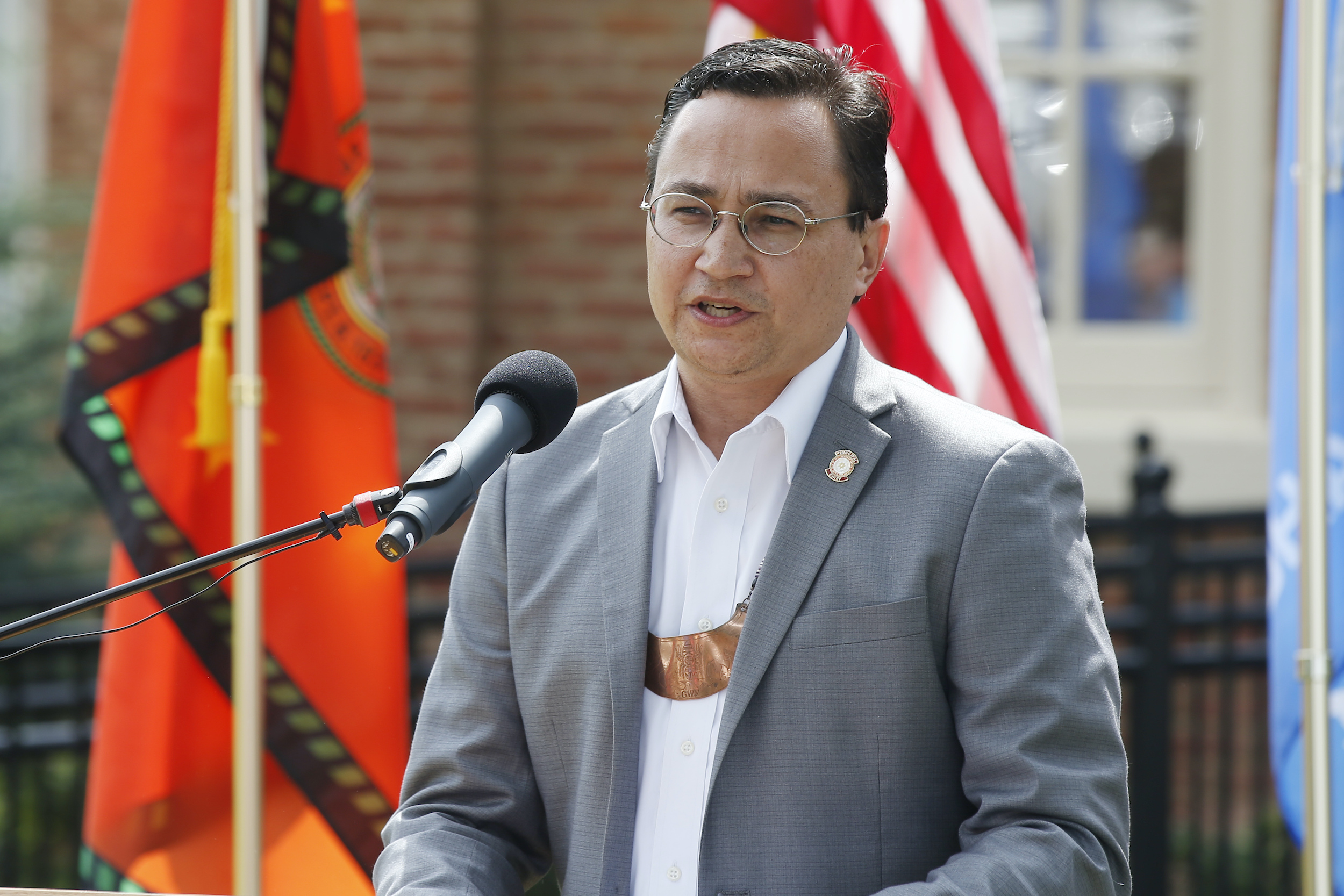
In this Aug. 22, 2019, file photo, Cherokee Nation Principal Chief Chuck Hoskin Jr., speaks during a news conference in Tahlequah, Okla. (AP Photo/Sue Ogrocki, File)
Just as it is valuable for journalists to explore how systems have failed to protect people from the coronavirus, it is also valuable to report about success stories.
The Cherokee Nation stockpiled supplies of personal protective equipment, began drive-thru testing, required masks, offered rapid tests in schools (and did reopen in-person teaching) and has recorded a far lower COVID-19 rate than other Native American populations. The Cherokee Nation says it is has seen no documented cases of workplace transmission. Stat News reports:
The proper collection of data on Native American health in the U.S. has been notoriously poor. Not so in the Cherokee Nation. Early on, tribal public health leaders created a Covid dashboard with a seven-day moving average based on one created by (Ashish) Jha (dean of the Brown University School of Public Health) and his former colleagues at the Harvard Global Health Institute. They track cases closely. Lisa Pivec, senior director of public health for Cherokee Nation Health Services said David Gahn, the Cherokee Nation’s public health medical director, has been working around the clock to figure out how best to present tribal Covid data and keep it updated. “We just issued update #255,” she said.
Principal Chief Chuck Hoskin Jr. also worked to ensure tribal health care workers would have enough PPE. “It blew my mind that the wealthiest country on the planet would find itself short of PPE for its health care workers,” he said. The nation has donated spare PPE to non-Native first responder agencies in Oklahoma and to the Navajo Nation. Hoskin is now using CARES Act Covid-19 emergency funding to build and retrofit facilities so Cherokee workers can manufacture PPE, including N95 masks, locally. “We don’t want to be at the mercy of the U.S. failure to ensure our people are safe,” Hoskin said.
See how the Cherokee Nation learned to used Tableau to track data.
Even with its success and determination, StatNews says, “The Cherokee Nation, with about 140,000 citizens on its reservation in northeastern Oklahoma, has reported just over 4,000 cases and 33 deaths.” But as dire as the numbers are, everyone agrees that — considering Native Americans are being infected at a rate three times the general population — without a focused and science-based response, the situation would be far worse.
To illustrate how strict the enforcement has been, Stat News says when U.S. Attorney General William Barr visited Hoskin in Tahlequah, the Cherokee Nation capital, just four days after he’d attended, unmasked, the White House Rose Garden ceremony, he strapped on a mask in the presence of Cherokee leaders. The mask mandate applies to everyone, they said. Everyone.
[the_ad id=”667872″]
Drug companies warn of vaccine side effects
Pfizer and Moderna both warned this week that their COVID-19 vaccines are likely to make you feel a little under the weather and maybe a little sore for a bit. And health experts say the public has to get ready for this because, they worry, the side effects might be enough to detour people from coming back for the second dose. The second dose is more likely to cause a side effect strong enough to cost you a workday. CNBC reports:
Dr. Sandra Fryhofer of the American Medical Association noted that both Pfizer’s and Moderna’s Covid-19 vaccines require two doses at varying intervals. As a practicing physician, she said she worries whether her patients will come back for a second dose because of the potentially unpleasant side effects they may experience after the first shot.
“We really need to make patients aware that this is not going to be a walk in the park,” Fryhofer said during a virtual meeting with the Advisory Committee on Immunization Practices, or ACIP, an outside group of medical experts that advise the CDC. She is also a liaison to the committee. “They are going to know they had a vaccine. They are probably not going to feel wonderful. But they’ve got to come back for that second dose.”
What the pandemic teaches us about sidewalks
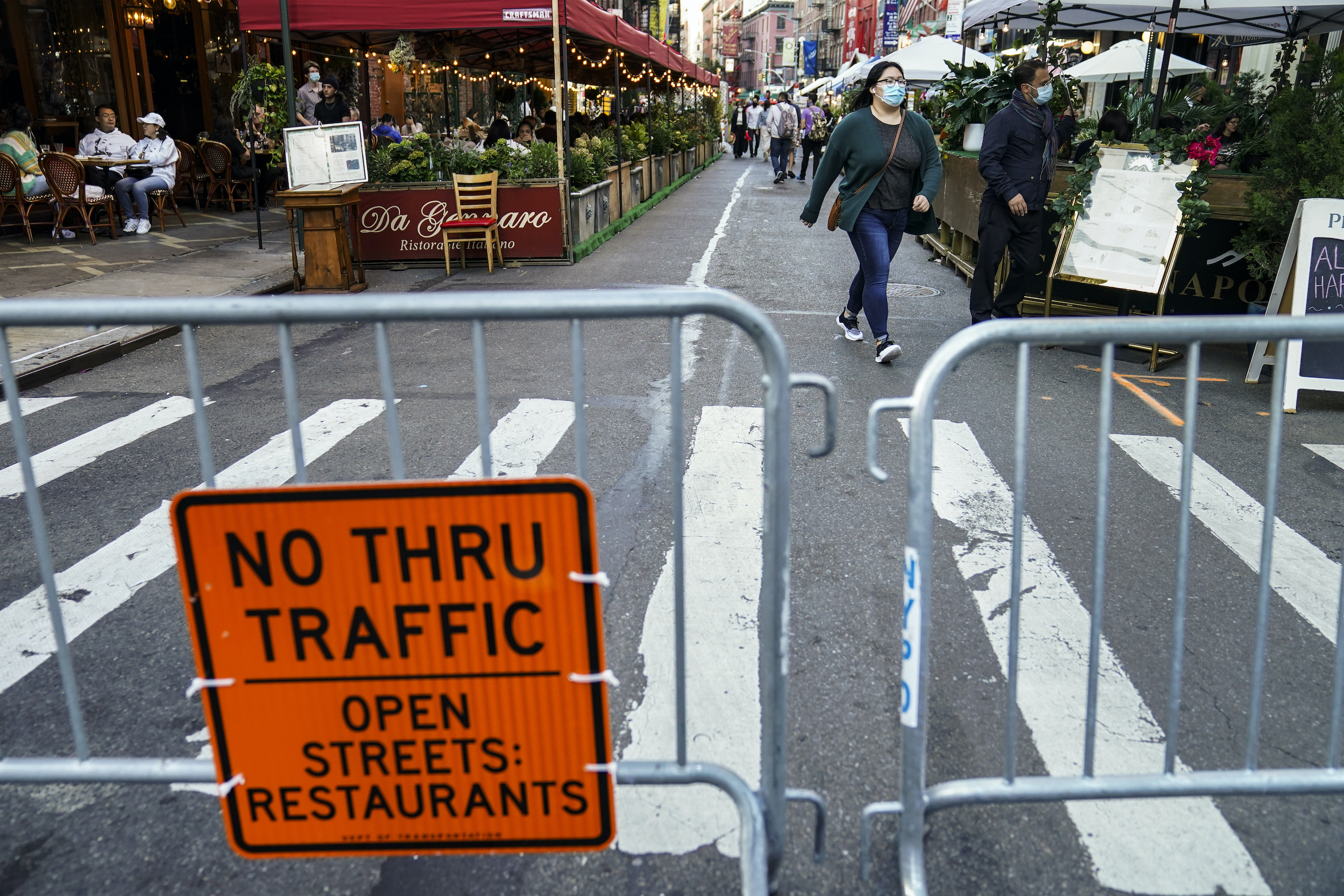
Diners frequent restaurants operating outdoor spaces that spread onto sidewalks and streets as part of continued COVID-19 economic impact mitigation efforts, Saturday, Oct. 3, 2020, in New York. (AP Photo/John Minchillo)
Among people who plan street aesthetics and functionality, a conversation is unfolding about how we can make better use of sidewalks. Sidewalks have turned into dining areas in a lot of your communities and, if we were willing to trade parking spots for wider sidewalks, there would be more room for dining, planters and other such things that make the space more inviting. Go to this piece from Govenring.com, a website that covers local government issues.
In my mind, the story underplays the need for parking, which is the No. 1 reason I drive by downtown shops and restaurants that look interesting … but not interesting enough for me to hunt down a parking space.
The way we live now: ‘Zillow surfing’
The cable channels that show people renovating and shopping for their “forever homes” may have been ahead of their time. Now people appear to be “Zillow surfing,” which is the nonstop scrolling through real estate listings and dreaming of your new place. Zillow Twitter is also a thing.
Okay, be honest. Are there any of these you haven’t done yet? pic.twitter.com/Pegu39hdwM
— Zillow (@zillow) November 10, 2020
My own version of Zillow surfing is constantly scrolling through listings for used RVs.
The way we work now
This is the glamorous work of journalism in Lima, Ohio. Bravo to you journalists who do what you have to do to get the job done.
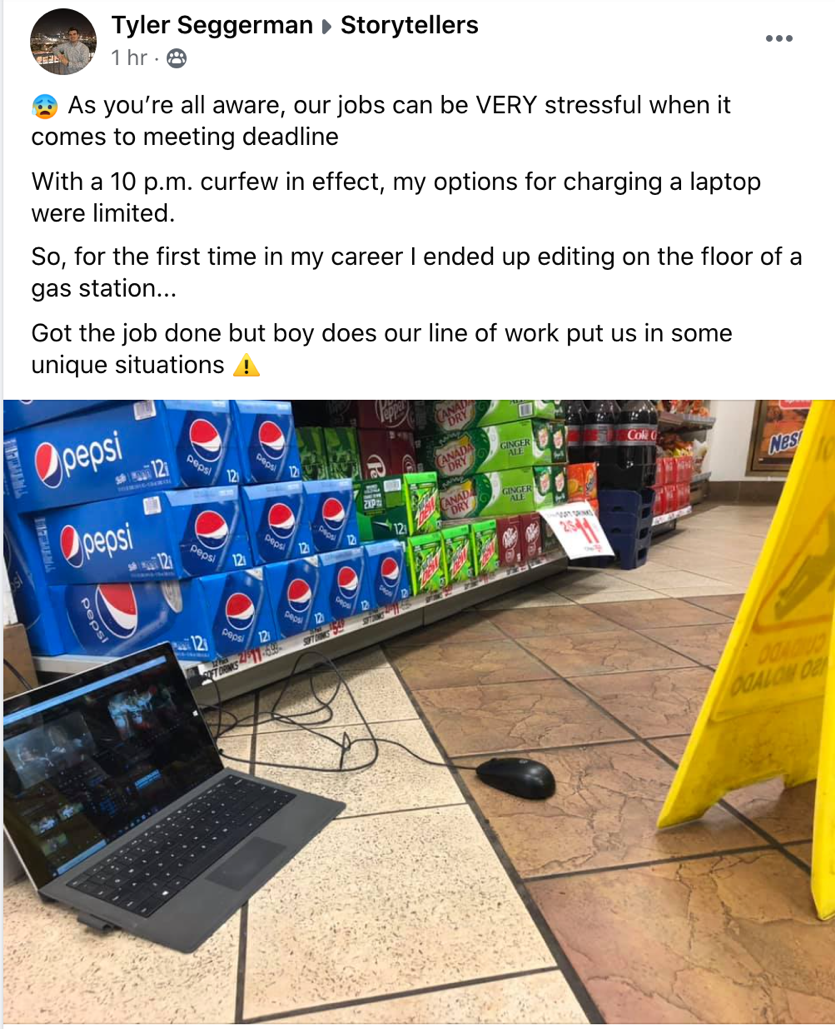
(Screenshot, Facebook)
My Thanksgiving thanks to you. I am going to take a couple of days off, unless there is big breaking news. In the meantime:
- I am thankful for the journalists who stood up to loudmouths and bullies during political coverage and, despite being harassed and demeaned, still reported their stories fairly and accurately.
- I am thankful for journalists who pressed for accountability when the government moved too slowly responding to the pandemic.
- I am thankful for newsroom leaders who don’t just say they “value the safety of their journalists above everything else.” They prove that is their priority by providing security and equipment to get the job done safely and then give journalists the airtime and page prominence and space to tell important stories.
- I am thankful for news executives who stiffened their spines to the blowing economic winds and found ways not to furlough or lay off workers.
- I am thankful for photojournalists and for newsrooms that value them.
- I am thankful for journalists who have produced and reported TV and radio newscasts from their bedrooms, kitchens and closets.
- I am thankful for newsroom managers who compassionately led newsrooms through hurricanes, elections, wildfires, a pandemic and post-election chaos.
- I am thankful for viewers, listeners and readers who turn to journalists who will report the truth, not just some version of the truth that isn’t too upsetting to their preconceived notions.
- I am thankful for people who are willing to pay for subscriptions, underwriting, commercials and grants that make journalism possible.
- I am thankful for honest elected officials who do not see journalists as enemies.
- I am thankful for journalists who have invited Poynter teaching into their newsrooms and for the associations that have hosted us in their virtual conferences and conventions this year. I hope we see you in person soon.
- I am thankful for you journalists who are doing the best you can while caring for your kids and your parents. I just hope you can take better care of yourselves. We need you more than you probably know. Please stay healthy and hang in there. Better days are ahead.
[the_ad id=”667878″]
We’ll be back Monday with a new edition of Covering COVID-19. Sign up here to get it delivered right to your inbox.

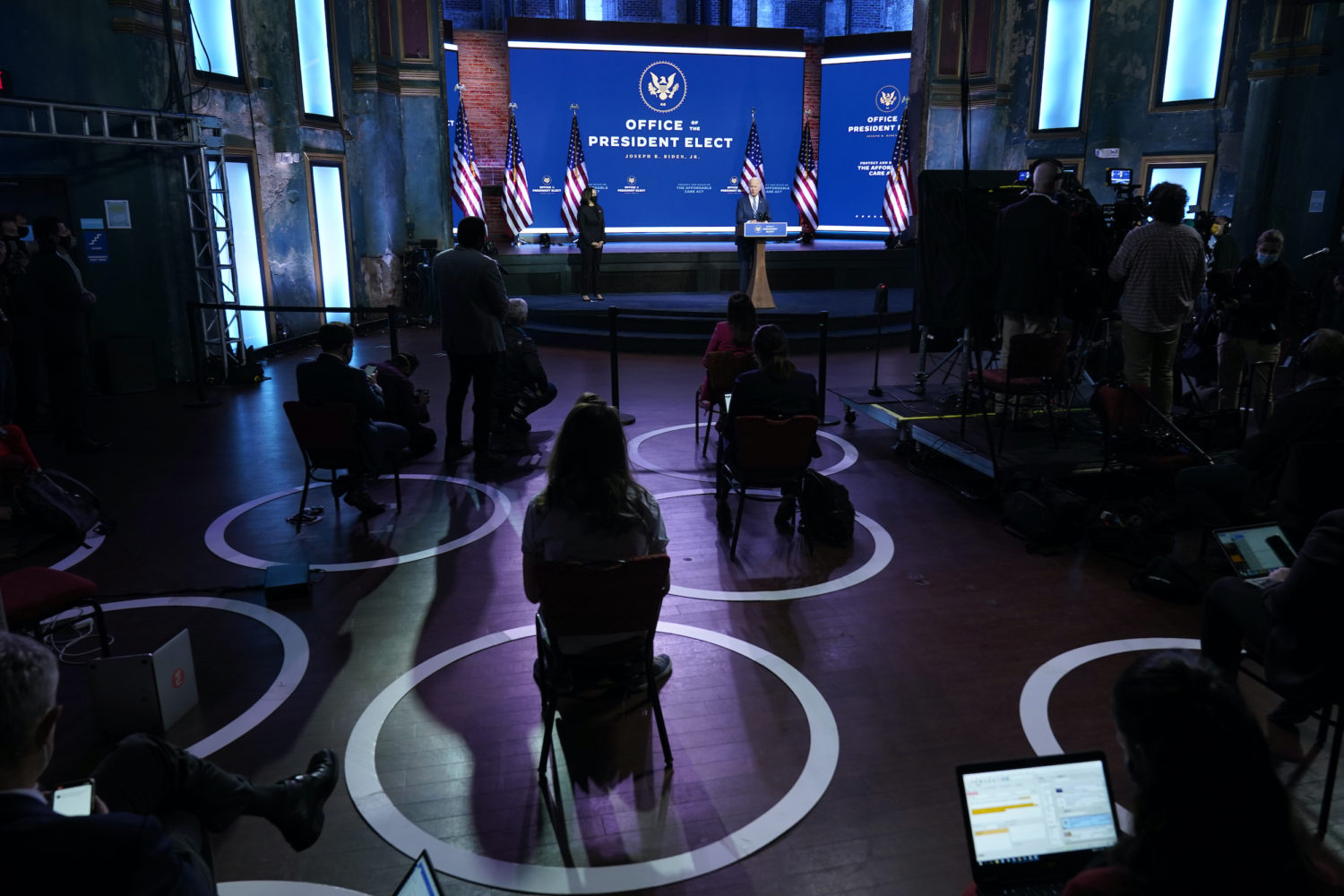
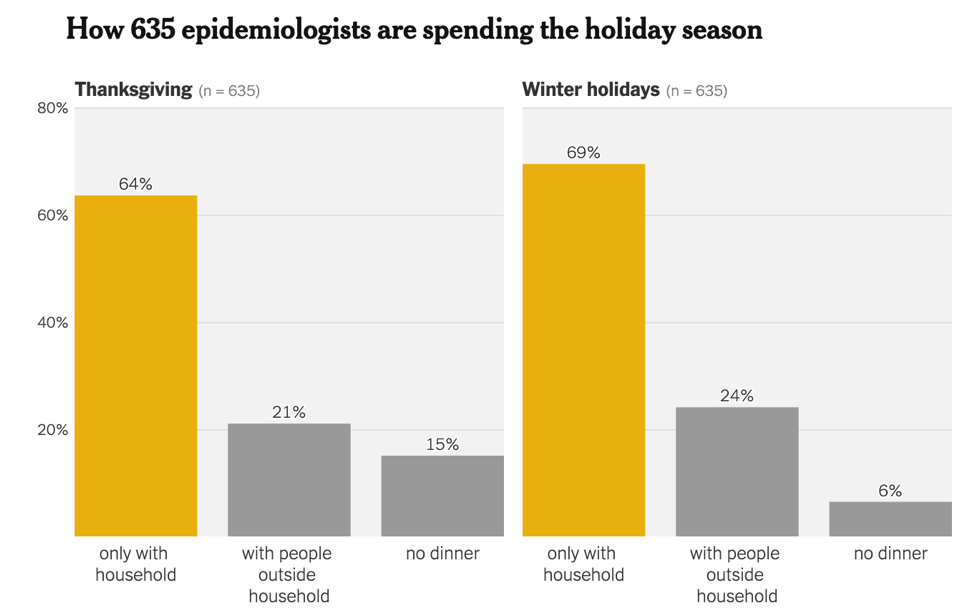






Visual journalists who get COVID-19 are unable to prove it was directly related to dangerous choices they make to perform their work in the riskiest ways, often ignoring alternate methods of newsgathering. Indeed, they could have just as easily caught the virus at a gym or grocery (if we are to believe the latest news stories about how the virus spreads). I am not buying the idea that journalists are equivalent to public safety heroes, although they may provide a useful (yet highly substitutable) function.